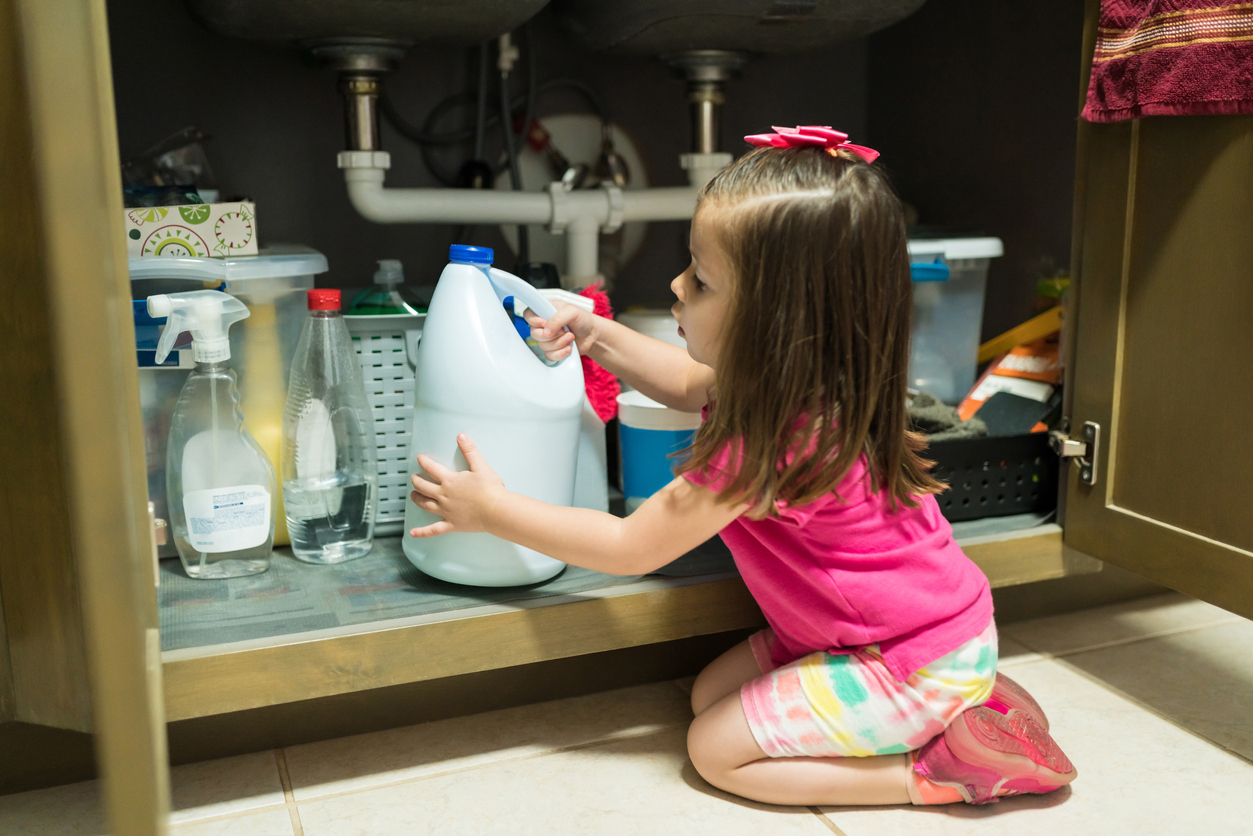These days, it is easy to become overwhelmed by things beyond our control, especially when we want so badly to keep our loved ones safe. Although we don’t have the power to control everything, there are some things we can do to make a difference.
According to the Center for Disease Control, unintentional injury is the third most common cause of death behind heart disease and cancer. Approximately 170,000 Americans die from unintentional injuries annually. Poisoning tops the list of the causes of these deaths (CDC).
Unfortunately, so much of the danger is right in front of us in the form of household products. Laundry detergent, household cleaners, and pesticides all pose risks (NSC). Fortunately, the simple act of finding places to store these products well out of the reach of children can make a significant difference. It is also important to read labels and avoid mixing products.
Not all household dangers are visible. Carbon monoxide is a poisonous gas found in homes that is produced by furnaces, stoves, fireplaces, portable generators, and other appliances (NSC). Thankfully, a modest investment in a carbon monoxide detector can help us battle this invisible foe. Just be sure to check your batteries regularly. Some people use annual events to help remind them, such as the time change from daylight savings in November.
Another invisible foe that merits our concern is radon, the “second-leading cause of lung cancer after cigarette smoking” (NSC). Radon can enter your home “through cracks in floors or walls, construction joints, or gaps in foundations around pipes, wires, or pumps” (American Cancer Society). Since radon is not something you can see or smell, the only way to know if the radon levels in your home are high is to test for it. (For test information, see the link below to “A Citizen’s Guide to Radon”).
A commonly overlooked adversary found in the home that can cause serious damage to children is the button battery. Button batteries are found in digital thermometers, remote controls, calculators, cameras, greeting cards, and many other unexpected items. While these batteries may look too small to be of concern, the danger they pose to children is significant. A button battery can be loged in a child’s throat or stomach and cause burns (Children’s Hospital of Philadelphia). After several hours of exposure, the battery may destroy the child’s voice box or cause internal bleeding. While initial symptoms may be mild, including throat irritation or a cough, left untreated, the battery may cause “abdominal pain, chest pain, and shock” (Children’s Hospital of Philadelphia). This may result in permanent damage with the child no longer able to speak or eat through the mouth. Button battery ingestion has even led to death in some cases (Children’s Hospital of Philadelphia).
Household products, button batteries, and poisonous gasses are all worth taking steps to avoid. Yet there is one more concern worth mentioning. Drug overdose is sadly the most common cause of poisoning death. While it can be easy to dismiss this problem as something remote, the issue may be closer than we think. According to the National Safety Council, “in 2018, over 67,000 people died from drug overdoses.” The Texas Medical Center reports that by 2019, Americans were more likely to die from an accidental opioid overdose than a car crash.
How does this happen? A basic answer comes from the NSC: “People who take prescribed opioids, even as directed, may build up a tolerance. When pain has subsided, some people find it easy to stop taking them and others find it harder to quit.” Sadly, 25% of Americans have been directly affected by opioid use and its accompanying tragedies. Americans either “know someone who has an opioid use disorder, know someone who has died from an overdose, or they have an opioid use disorder themselves” (NSC). If you or someone you know has a concern about opioid addiction, you can find help through the Substance Abuse and Mental Health Services Administration (SAMHSA).
Look around your home for items and substances that might cause harm especially to children. Purchase and maintain smoke alarms, carbon monoxide detectors, and have your home checked for radon. Be aware of what medicines you take and what risks accompany them. Keep the number for the National Poison Control Center next to your landline or in your cell phone contacts: 800-222-1222.
At Waitte’s Insurance Agency, we want you and your family to stay safe. We care about our community because we are part of the community. Give us a call when you are ready to discuss your unique insurance needs.
American Cancer Society
CDC Unintentional Injury Deaths
Children's Hospital of Philadelphia
EPA "A Citizen's Guide to Radon"
National Safety Council
National Safety Council "Preventing Poisoning and Drug Overdoses"
National Safety Council "Addressing the Opioid Crisis"
SAMHSA
Texas Medical Center

